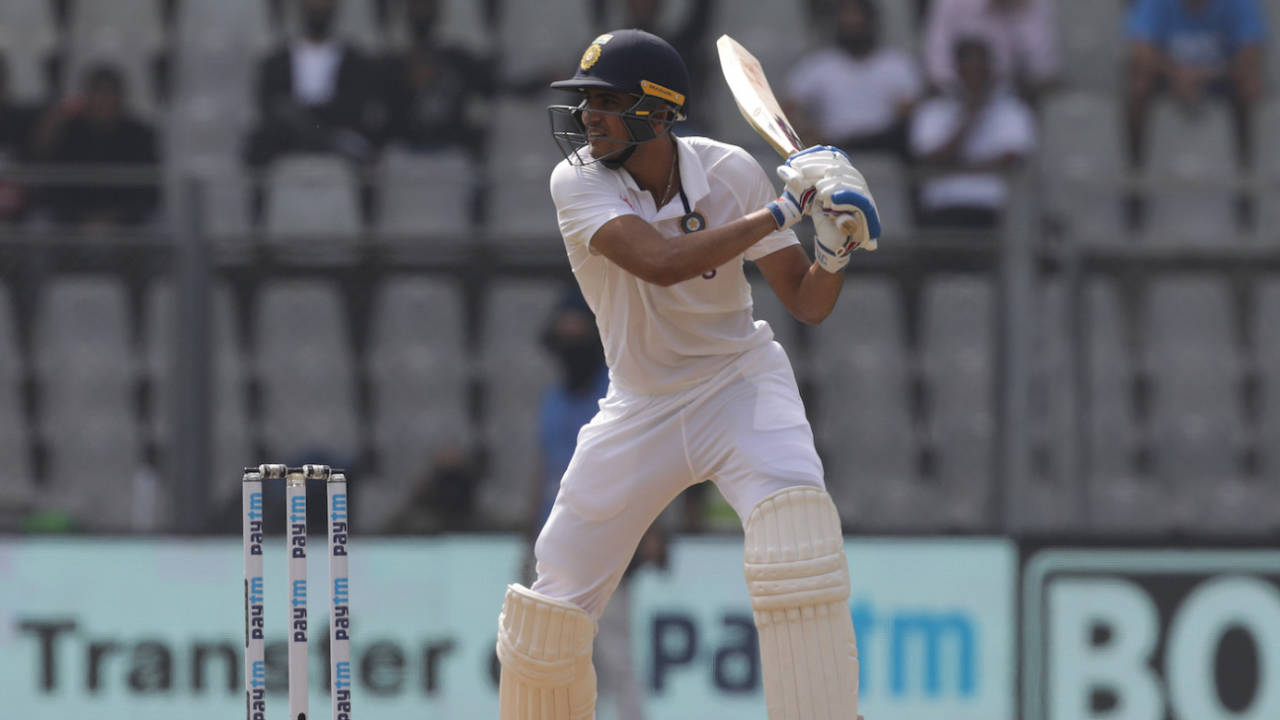India's selection headache - Vihari, Gill, Iyer in contention for two middle-order slots
The absence of Pujara and Rahane has opened up two slots. Who should play, who shouldn't, and why?
Sidharth Monga
02-Mar-2022
Shubman Gill has played 44 of his 57 first-class innings as an opener, but could be repositioned into the middle order • BCCI
For the first time in more than 10 years, India are playing a Test with neither Cheteshwar Pujara nor Ajinkya Rahane. The last time they did so, Virat Kohli was yet to score a Test hundred. He now has 27, and is playing his 100th Test. It's a little like how, when both Rahul Dravid and VVS Laxman retired together in the year 2012, India had played only one Test in the last 16 years with both of them missing.
While Pujara and Rahane are not done yet, the first right on those two positions vacated by them, No. 3 and No. 5, belong to youngsters. With Ravindra Jadeja back and R Ashwin looking "comfortable" in the nets according to Japsrit Bumrah, India's lower-middle order is set. Jadeja, Rishabh Pant and Ashwin are formidable Nos 6 to 8 in Indian conditions. The openers are set too: Rohit Sharma and Mayank Agarwal.
That leaves a tough choice between three contenders for Nos 3 and 5. Here's a look at them.
Hanuma Vihari
The incumbent first change if you go by the selection in South Africa when Kohli missed the second Test with a back spasm. Vihari has for long been the nearly man, good enough to be in the squad but not in the best five. So he has played Tests only in conditions that warrant the extra batter, which is almost always away from home. So look at his Test average of 34.2 in that context.
The incumbent first change if you go by the selection in South Africa when Kohli missed the second Test with a back spasm. Vihari has for long been the nearly man, good enough to be in the squad but not in the best five. So he has played Tests only in conditions that warrant the extra batter, which is almost always away from home. So look at his Test average of 34.2 in that context.
The one argument against Vihari can be that he is a defence-first batter, which shows in his strike rate of 42.66 in 11 Tests and 48.74 in 99 first-class matches. And in this age of bowling-friendly conditions and fit and deep attacks, it is becoming exceedingly difficult for primarily defensive batters because that easier spell that they rely on hardly ever arrives these days.
Pujara was an anomaly in that sense. He took defensive batting to its extreme in these tough conditions, and was good enough to succeed. It must have taken a lot of mental energy and stubbornness. If the team management sees some of that in Vihari, they could ask him to bat at 3.
Shreyas Iyer
It can be argued that Iyer was the actual incumbent. Around the same time that Kohli developed those spasms in South Africa, Iyer came down with a bad stomach bug. The team management has not had the opportunity to say if Iyer's illness was why Vihari played or if they thought Vihari a better option in South Africa.
It can be argued that Iyer was the actual incumbent. Around the same time that Kohli developed those spasms in South Africa, Iyer came down with a bad stomach bug. The team management has not had the opportunity to say if Iyer's illness was why Vihari played or if they thought Vihari a better option in South Africa.
Before going to South Africa, though, Iyer had done his bit to be in the conversation. Making his Test debut on a short notice, Iyer rescued India from a dicey situation with a century and followed it up with a half-century in the second innings. This was only his second first-class game in close to four years. In that series, he showed the ability to dominate spinners, which could be handy for a home series. His first-class record backs it up: an average of 52.1 and a strike rate of 80.22 maintained over 56 matches.
Shubman Gill
If we are talking incumbent first change, it can be argued that Gill is the original one. Cast your minds back to selection for the home series against New Zealand: Vihari was sent to South Africa with the A team, and Gill was expected to bat in the middle order, which many believe is his ideal station. On the eve of the Kanpur Test, though, KL Rahul got injured, which left India no choice but to open with Gill.
If we are talking incumbent first change, it can be argued that Gill is the original one. Cast your minds back to selection for the home series against New Zealand: Vihari was sent to South Africa with the A team, and Gill was expected to bat in the middle order, which many believe is his ideal station. On the eve of the Kanpur Test, though, KL Rahul got injured, which left India no choice but to open with Gill.
Before the South Africa tour, Gill's shin injury resurfaced, postponing the project of repositioning Gill into the middle order. He is now fit, and there are two positions vacant. He is believed to be the most complete of the three batters, averaging 56.56 and striking at 69.8 per 100 balls in 33 first-class matches. Gill has played 44 of his 57 first-class innings as an opener, but eight of his 13 India A innings and a chunk of the runs scored there have come further down the order. Those teams happened to be under Rahul Dravid, who is also the coach of the senior side now.
Sidharth Monga is an assistant editor at ESPNcricinfo
